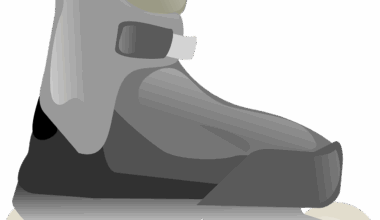Karate Stances: Building a Strong Foundation
In the art of karate, mastering stances is essential for building a strong foundation. Stances are not merely static positions; they form the backbone of effective techniques, balance, and power generation. Each stance serves a specific purpose, influencing how practitioners move and react. By understanding the fundamentals of karate stances, students can enhance their skill levels significantly. For beginners, gaining proficiency in stances provides confidence in executing various techniques. Additionally, a strong stance helps in defending against attacks, ensuring that practitioners remain rooted and stable. In this exploration, we will delve into several critical stances, their applications, and practices vital to developing a strong martial arts foundation. Stances such as Zenkutsu dachi (front stance), Kokutsu dachi (back stance), and Kiba dachi (horse stance) are key components of karate training. Through dedicated practice, these stances help practitioners improve overall performance. A solid foundation formed via stances enables effective technique execution, translating into success in sparring and competition environments. Therefore, it is essential to pay close attention to the subtleties of each position and movement that supports stances and their execution.
The Importance of Stances in Karate
Understanding the importance of stances in karate is crucial for anyone aspiring to excel in martial arts. Stances provide stability, balance, and strength, which are paramount when engaging in any form of combat or self-defense. For instance, in Zenkutsu dachi, practitioners can generate forward momentum, making strikes more powerful and effective. On the other hand, Kokutsu dachi focuses on defense and retreat, allowing karatekas to maintain a solid center while absorbing incoming attacks. This versatility showcases how each stance has unique advantages in different situations. With practice, one can learn to transition seamlessly between stances during drills and sparring, providing an edge over opponents. Furthermore, practicing stances builds muscle memory, essential for quick responses in dynamic environments. To integrate stances into your training, consider focusing on the transition between different positions. Students can practice moving fluidly between stances, enhancing their overall agility and effectiveness. Ultimately, a thorough understanding of stances empowers practitioners to respond better to threats and to impose their techniques effectively, fostering confidence and proficiency in their karate journey.
Core Karate Stances to Master
Many core karate stances serve distinct purposes and techniques central to martial arts training. First, Zenkutsu dachi, or the front stance, is vital for developing forward motion and power. In this position, one foot should extend forward while maintaining a hip-width distance between the feet. Practicing this stance improves balance and ensures a strong connection to the ground. Next, Kokutsu dachi, or the back stance, is equally critical as it emphasizes defense and quick movements. In this stance, most weight is centered on the back leg, allowing quick retreats without losing balance. Another essential stance is Kiba dachi, or the horse stance, which builds leg strength and endurance. This wide stance forces practitioners to engage multiple muscle groups, creating a robust lower body. Practicing these stances regularly cultivates a deep awareness of body mechanics and helps elevate overall performance. Additionally, Musubi dachi, representing the default stance, serves as a transitional position between movements. Mastery of these core stances forms the basis of effective karate practice, paving the way for advanced techniques and applications.
Practicing Stance Transitions
Practicing stance transitions is as vital as mastering individual stances. A smooth transition between stances increases the effectiveness and fluidity of movements in karate. To enhance this skill, practitioners can design drills that incorporate transitioning from one stance to another. For instance, moving from Zenkutsu dachi to Kiba dachi requires shifting weight and altering foot placement, an essential skill in combat scenarios. By focusing on transitions, you develop muscle memory that instills a sense of confidence during sparring. Start with basic transitions, progressing to more complex combinations that challenge your coordination and reaction time. Practicing these transitions regularly helps build fluidity in movements, which is critical in both competition and self-defense situations. Additionally, recognizing how stances offer tactical advantages during exchanges enhances combat effectiveness. Encourage partners during drills to simulate various attacks, emphasizing the need to transition quickly and smoothly between stances. This will cultivate a deep understanding of situational responses, equipping you with the tools to adapt flexibly. Thus, incorporating stance transition practice into your training routine will undeniably enhance proficiency and effectiveness in your martial arts journey.
Building Strength and Stability with Stances
Building strength and stability through karate stances contributes significantly to a martial artist’s overall performance. When practitioners consistently execute and hold each stance, they engage muscles in their legs, core, and upper body. This engagement leads to improved endurance, balance, and performance over time. Beyond physical benefits, proper stances enhance mental focus and discipline, fundamental aspects of martial arts. Holding stances like Kiba dachi challenges both mental and physical endurance, promoting resilience. Furthermore, muscle engagement in various stances can mitigate the risks of injury. As students train their lower bodies in positions such as Zenkutsu and Kokutsu dachi, they develop stronger stabilizing muscles essential for performing techniques safely. It is also important to consider the role of breath in maintaining posture during training. Controlled breathing aids in keeping the body relaxed and focused while executing movements, enhancing overall performance. Integrating these principles into practice routines will create a comprehensive approach to building strength and stability. Over time, karatekas will develop a robust structure that enhances their ability to engage effectively during both training and competition, illustrating the importance of stances in building a solid foundation.
Conclusion and Key Takeaways
In conclusion, the significance of karate stances cannot be overstated. Mastering various stances is essential for developing strength, balance, and effective technique necessary for martial arts proficiency. Practitioners should focus on individual stances like Zenkutsu dachi, Kokutsu dachi, and Kiba dachi to cultivate a strong foundation. Each stance plays a specific role in aiding performance, whether through power generation or providing stability during defensive maneuvers. Practicing stance transitions can enhance fluidity in movements and ensures practitioners can adapt quickly to different situations. Building strength and stability through stances increases not only physical capabilities but also mental focus and discipline. Remember to incorporate breathing techniques during stance practice as it can significantly affect performance. As karatekas devote time and energy to understanding and mastering stances, they will ultimately see improvements in their overall martial arts journey. Through dedicated practice and focus, each student can develop a solid foundation that fuels their growth and success in karate. Finally, embrace the process and remain patient; the mastery of stances is an ongoing journey that rewards commitment and diligence.
Additional Resources for Karate Practitioners
To further enhance your knowledge and skills in karate stances, consider exploring additional resources that can aid your practice. There are numerous books and guides dedicated to the art of karate, containing insights from experienced practitioners. Online platforms also provide valuable video tutorials demonstrating correct posture and stances, enriching your learning experience. Engaging with online communities or forums frequented by karate enthusiasts can foster connections, allowing you to share experiences and tips with fellow students. Furthermore, attending local seminars or workshops offered by skilled instructors can offer hands-on experience and guidance in perfecting your techniques. Practicing alongside others helps to refine your skills while receiving constructive feedback. Additionally, analyze competitive matches to observe how stances are applied in real-time situations. By studying successful students, you can gain a deeper appreciation for how diverse stances impact combat strategies. Ultimately, continuously seeking resources and learning opportunities enhances your overall proficiency. Embrace the journey of understanding karate stances, for they are integral to strengthening your martial arts foundation.


